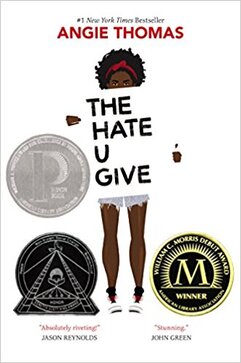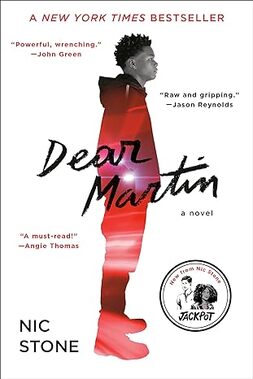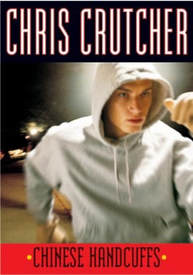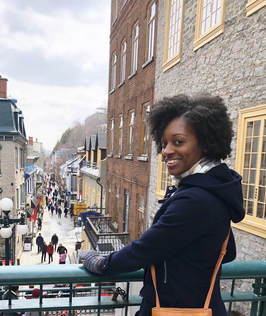The Potential of Young Adult Sport's Literature in Teaching Empathy at a Jesuit High School by Jayne Penn
| Students exposed to their personal environments, alone, rarely have opportunity to learn about other cultures and lifestyles. This, I contend, prohibits an ability to feel compassion for others. As an African American female educator in a predominantly all-White college preparatory high school for young men, I am aware of the cultural assets I bring and how my lived experiences and professional expertise may be perceived differently by those I teach. Teaching multiple perspectives has been a professional goal of mine, however, especially when helping students to recognize the environmental bubbles we live in. Students, as critical readers, should question the world around them and explore multiple perspectives. Teaching empathy, I have found, furthers my ability to reach these goals. |
My moral identity results from societal influences and, as a result, I incorporate ideas of institutional and cultural socialization in my preparation and teaching processes. These ideas include the vision I carry forth for teaching empathy. Harro (2000) writes, “our socialization sources are rapidly multiplied based on how many institutions with which we have contact” (p. 18). Such socialization has been true for me, too, where the beliefs I hold have been influenced from traditional Baptist Christian practices to liberal compasses that provided throughout my education. Transitioning in the role of a teacher in different states, both educationally and professionally, has helped me to mold my moral compass in different ways, which is something I express with my students. Exploring empathy encourages my students to grow as individuals for themselves. Banks and Banks (2009) also help me to realize that similar to how I was influenced by my environments, so it will be for students. In their words, “schools are also cultural sites and teachers are themselves cultural beings” (p. 37). As a result, I am aware of the effect I have on my students’ cultural assimilations, and I try my best to be a resource for them. This includes the literature I introduce them to and the multicultural perspectives I want them to appreciate, not only in their high school experience but throughout their lives.
My School (Fairfield College Preparatory School).
The Athlete Narrative

With the goal to mix-up the curriculum so that it was more diverse, I added August Wilson’s play, Fences. Fences encompasses qualities in a story that I desired: sports, race issues, family issues, personal growth challenges, the journey into manhood, ethics, conflict, etc. It also offered a location to discuss empathy. Fences explores the conflicts within a male protagonist, Troy Maxon, and his effect on family and friends. As a former baseball player in the Negro Leagues who was rejected from being integrating into Major League Baseball, Troy blocks his son’s, Cory, opportunity to play college football. The play serves as a vehicle to dig into Troy’s history and to question the choices he makes throughout the book. Troy’s decisions throughout the script make it hard to like him yet learning his past helps to understand that his flaws make him the individual that he is. As a way to be most effective in reaching goals with my students, I designed a class project to help them better understand empathy.
I named the project The Athlete Narrative, a project that requires students to choose one athlete they respect but know very little about. While reading Fences, they research and write a report on that athlete’s experiences, explain their journey, and look critically at the athletic careers, including the many communities that help make them the individuals they are. Jesuit schools like mine encourage students to be men and women for others, and I wanted my students to see themselves as individuals who are also influenced by larger communities: families, neighborhoods, regions, friends, histories, etc. I wanted them to see that characters in the stories we read are also impacted by the societies that make them who they are.
As the young men work through the play, too, I supplement reading materials that expose them to a wider understanding of athleticism, including:
- Darkness Unto Light: Kris Dunn’s path to stardom at Providence
- Undaunted by grim prognosis, college softball star vows to return to field
- Reborn and revived: Marines vet Hank Goff rediscovers joy through football
- New York Liberty star Tina Charles determined to help her community
Reading such news stories brings a richer understanding to Wilson’s play, as well provides additional angles to teach empathy. The work aso enables students to avoid preconceptions of people they do not know and provides a scaffold to students’ prior knowledge with new knowledge. Using the theme of empathy has enabled my students to understand experiences different from theirs and, in turn, to see the humanity in people and not just occupations or labels. My intention was not to trivialize ethnic cultures or the struggles they face; rather, I wanted to work through sports stories to challenge “stereotypes and misconceptions” (Banks, 1989) p. 17).
The Potential for Adding Young Adult Literature

The Hate U Give also does a fantastic job portraying Starr’s world as a prep student from the “ghetto” and what it is like to live separate lives: one as Williamson Prep Starr and the other as Garden Heights Starr. As she becomes the central witness of controversial police shooting of an unarmed black teen, she begins to unravel the identities she carries and struggles to keep Garden Heights Starr out of Williamson Prep, especially as the shooting gets nationwide attention. The Hate U Give has tremendous potential for teaching empathy. Currently, the only novel offered to students with a black protagonist in the sophomore curriculum is The Bluest Eye, and that is a challenging text for my students. The Hate U Give would provide a modern, relevant story that would engage more of readers, whether at the beginning of the school year or at the end.

Cop-profiling and the killing of young Black men are relevant to the lives of young people today and on message with the current state of this country (e.g, Milwaukee’s Sterling Brown and experience as a Black male athlete). The book explores a sensitive and complicated topic and can be used to initiate class discussions within a theme of heroes and conflicts. At the same time it would my male readers to look at all sides of a complicated issue through an empathetical lens.

Similarly, in “Teaming Up: Teaching Analysis and Research through Sports Controversies,” Beckelhimer (2014) makes the argument that sports create controversy that, in turn, can initiate arguments, analysis, research, and context. Teachers can and should use sports to help their students learn rhetoric and analyze controversy. Beckelhimer also encourages the idea of expanding resource options for research, similar to how the Athlete Narrative requires my students to research background stories of professional athletes as a way to understand the reasoning behind the human behavior and to see athletes as humans, and not merely entertainers.


 RSS Feed
RSS Feed